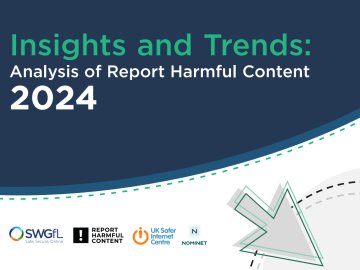This article was originally published on the UK Safer Internet Centre website.
Anti-Bullying Week is here – and what a great week it’s been already!
While not without its sad moments, this is a week that reminds us to be kind, be aware and strive for better. Unfortunately, bullying is part of almost all schoolchildren’s lives. Whether being bullied, witnessing bullying, or even doing it, no child should spend their school life dealing with bullying in any form.
With the advent of social media and instant messaging, bullying is no longer confined to the playground. Bullying words and behaviours can now follow people wherever they go, thanks to the digital devices in their hands. It is not a new phenomenon, but there are still some confusions as to the best way to manage cyberbullying incidents.
Expert knowledge
The Professionals Online Safety Helpline (POSH) is the UK's only dedicated helpline for members of the children's workforce dealing with online safety issues. In over 8 years of running the helpline, we've seen trends come and go, peaks and troughs of certain issues, and some familiar themes coming up time and time again.
Our work in running POSH puts us on the frontline of online safety issues and cyberbullying has remained one of the most consistent thorns in the side of the children’s workforce.
We’ve taken our nearly-ten-years of experience running the online safety helpline and compiled some top level tips to help you make your school a bullying-free zone.
Check in
Even if you are in a small setting, it is impossible to know how happy all of your students are. Take some time to check in with students, maybe even send a happiness survey around your student body to get a better understanding of the culture in your school. Try to encourage transparency and trust – if you can avoid sanctioning and confiscating devices, you will leave students feeling empowered and able to share their problems.
You can also use tools and services to see what is being said about your school online. You can set these up on Google or invest in tools that give you a greater degree of flexibility and control, such as Reputation Alerts - our reputation management tool.
Safe Spaces
You can’t always prevent bullying, but you can ensure that young people know where to turn if they need some help – or just someone to listen and understand. Having safe spaces and designated safeguarding champions within your school is hugely important for everyone’s happiness. Most schools will have a designated safeguarding lead or pastoral leaders, but do all the students know how and where to find them?
And if you are facing a number of cyberbullying issues, why not turn to those environments to create safe spaces for your students? Some young people will find it easier to seek help through digital communication rather than in-person – a school Instagram page or our anonymous reporting tool Whisper may work better for some students.
Strong policy
Having a clear and watertight policy around bullying will help to empower both the student body and the staff at your school. It’s important to include online bullying in this and make it clear to students and staff that any form of bullying is not acceptable, even if this happens outside of school hours.
Breeding a kindness culture
It may be that the culture at your school needs overhauling. You may find that even with the above provisions in place, there are still a lot of unhappy students. If changes from above aren’t working, remember that children are more likely to take advice from and listen to each other. Our friends at the Diana Award have taken this idea and developed one of the best peer monitoring schemes to tackle bullying, that delivers amazing results.
Tech-free zones
Likes and numbers of followers can really boost a child’s sense of self-esteem. The UK Safer Internet Centre's research for Safer Internet Day 2018 found that young people need to receive 52 likes and have 214 followers on Instagram to feel happy and 73 days in a Snap streak to feel happy.
But what happens if their likes, followers, and streaks are below those numbers? The influence of social media can swing the other way too. Bullying exists online, but the causes and flashpoints can move into the offline world too – if someone is teasing you for having too “few” followers, what happens to your self-esteem and feelings of worth then? It’s important for children that we encourage time spent offline – building their confidence and worth around something that has nothing to do with their online presence. At home we hope you may have family meals with no tech, why not try that at school as well? Lessons are obviously a no-phone zone, but do we encourage enough socialization and activity away from the screen when we are not learning?
We are here to help you
Even if you’ve taken the right steps and tried to make cultural changes within your school community, you may still run into bullying issues. It’s a shame, it’s frustrating, and it can feel really difficult to deal with.
If you’re looking for more resources from the UK Safer Internet Centre, take a look at Childnet’s Crossing the Line PSHE Toolkit and Cyberbullying Guidance. We also published a guide to tackling cyberbullying using the latest tools and features released by social media networks.
We also recommend taking a look at resources from organisations we mentioned earlier in this article, such as the Anti-Bullying Alliance, Diana Award, and – if you are dealing with online-specific issues – the Professionals Online Safety Helpline.
You can contact us by phone (0344 381 4772) or email (helpline@saferinternet.org.uk).






